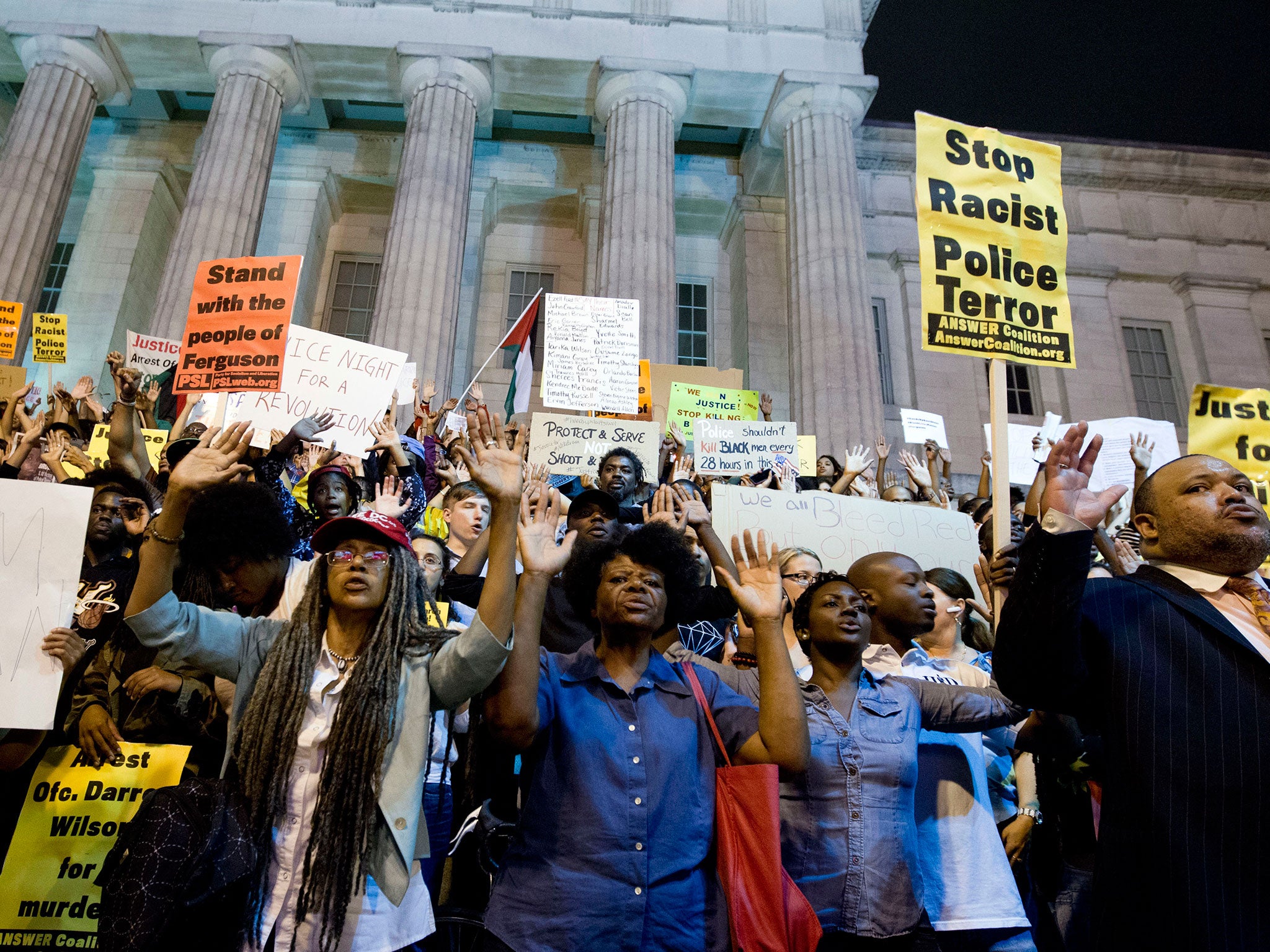Michael Brown shooting: US to review militarisation of police in aftermath of Ferguson riots
US newspapers were filled with images of police firing rubber bullets and the streets of Ferguson, Missouri swirling with tear gas

Your support helps us to tell the story
From reproductive rights to climate change to Big Tech, The Independent is on the ground when the story is developing. Whether it's investigating the financials of Elon Musk's pro-Trump PAC or producing our latest documentary, 'The A Word', which shines a light on the American women fighting for reproductive rights, we know how important it is to parse out the facts from the messaging.
At such a critical moment in US history, we need reporters on the ground. Your donation allows us to keep sending journalists to speak to both sides of the story.
The Independent is trusted by Americans across the entire political spectrum. And unlike many other quality news outlets, we choose not to lock Americans out of our reporting and analysis with paywalls. We believe quality journalism should be available to everyone, paid for by those who can afford it.
Your support makes all the difference.President Barack Obama has ordered a comprehensive review of policies that have encouraged police departments across the United States to acquire ever greater quantities of military kit that was once the reserve of professional soldiers.
Likely to be welcomed by many on Capitol Hill and particularly Democrats, the move has been spurred by events in Ferguson, Missouri, where mostly peaceful protests over the killing by a police officer of black man Michael Brown were met over several nights by lines of body-armoured police brandishing automatic weapons, and in some cases riding mine-resistant military-style vehicles.
The death of Mr Brown, whose funeral is to be held in Ferguson on Monday, and the subsequent protests dominated the American newscasts for days in part because of the police response to the protests that to some seemed gravely overblown. Even before the White House indicated the President’s unease, members of Congress also signalled a determination to re-examine existing policies and hold hearings next month.
For days newspapers were filled with images of police firing rubber bullets and the streets of Ferguson swirling with tear gas. “The whole country and every representative and Senator have seen the visuals, and at some level, it made all of us uncomfortable,” said Missouri’s Democrat Senator, Claire McCaskill, who will lead a hearing on the issue in September. “It’s a moment where we can take time out and look at these policies.”
The militarisation of American police departments dates back even to the early 1990s when Washington wanted to make them more effective in fighting the war on drugs and lowering crime. After 9/11, however, a consensus also formed that the police had to be on the front line fighting terrorism. While crime levels have fallen dramatically and very little of a terrorist nature has happened on US soil, that process has continued to accelerate.
The White House review is to focus on the programmes that encourage police forces to stock up on military-style equipment. One among them stipulates that equipment has to be used within one year of it being supplied, with the result some departments may deploy their new hardware when they don’t really need to. There are also urgent questions over whether police are always properly trained to use what they are being given.
Certain to come under scrutiny also is a Pentagon programme that directly channels surplus defence equipment to police departments, much of it brand new. While that programme was developed with the ostensible goal of giving police the best equipment possible – the hardware ranges from drones to automatic weapons, body armour, silencers and heavily armoured vehicles – it also provides a new market to defence contractors at a time when US military engagements overseas are declining.
Some of this hardware “flowed to local police forces because they were increasingly being asked to assist in counterterrorism”, Eric Holder, the Attorney General, said at the weekend, while conceding that “displays of force in response to mostly peaceful demonstrations can be counterproductive”. He said: “It makes sense to take a look at whether military-style equipment is being acquired for the right purposes and whether there is proper training on when and how to deploy it.”
Join our commenting forum
Join thought-provoking conversations, follow other Independent readers and see their replies
Comments